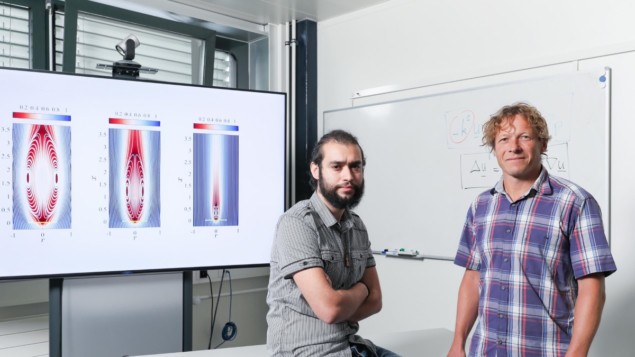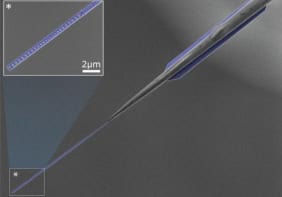
Scientists in Switzerland, the Netherlands and Italy have explained why the brush-like structures that keep dandelion seeds aloft have about 100 bristles. The team has calculated that 100 is the number needed to ensure the stability of a vortex structure in the air that enhances the flight of the seeds. The insights provided by the study could lead to the development of new types of tiny flying drones.
Dandelions can be found in many places worldwide, in part because of the wildflower’s ability to spread its seeds on the wind. After pollination, the dandelion flower matures into a white fluffy “blowball”. This comprises single fruits each attached to a tiny brush-like parachute called a “pappus” – which has about 100 individual bristle filaments. This structure allows the seed to remain aloft over distances of 100 km or more when the air is warm and dry.
In 2018, a multi-disciplinary team of scientists led by Naomi Nakayama and Ignazio Maria Viola at the University of Edinburgh discovered that rather than acting as a tiny parachute, the pappus uses an unexpected mechanism to keep its seed aloft. They showed that a “separated vortex ring” in the air near the seed is created and stabilized by air flowing through the pappus. The lift enhancement provided by the separated vortex ring is believed to underpin the extraordinary flight ability of the dandelion. However, exactly how many filaments are needed to create a stable vortex ring remained a mystery.
Flight stability
Now, François Gallaire and colleagues at EPFL Lausanne, the University of Twente and the University of Pisa have assessed the flight stability of dandelion seeds under fluctuations that are encountered in nature. Their theoretical study of the flow through the filaments of the pappus used a simplified disc model reminiscent of a bicycle wheel and its spokes.
The researchers considered different typical air velocities, disc sizes, and number of filaments and computed a steady-state solution of the Navier–Stokes equation. They showed that the pappus porosity has a threshold, beyond which the flow becomes a separated and circulating vortex ring.
“For all of the study cases, we first compute the underlying steady base state, and then we study its linear stability,” explains François Gallaire, who led the investigation at EPFL in Lausanne. “The way we constructed the study is that we fixed the geometry of the single filament, and of the disk pappus. The only parameters we vary are the number of filaments.”
Reynolds number
The separated vortex ring is stabilized by the airflow through the filaments and the vortex stability depends on two parameters. These are the permeability of the pappus and its Reynolds number – the latter being defined by the size of the pappus and the wind velocity.
The researchers fixed the size of the simulated pappus and varied the porosity of the pappus by changing the number of filaments in it. According to their calculations, the ideal number of filaments in a dandelion pappus to allow an adequate permeability necessary for creating a separated vortex ring is about 100 – which agrees with the number observed in nature by the Edinburgh team.
Edinburgh’s Viola, who was not involved in this latest research, says that Gallaire and colleagues have calculated the limit of the stability of the flow feature that his team discovered.
New types of drones
This new understanding of vortex ring stabilization opens exciting possibilities for creating technologies inspired by the dandelion pappus. Knowing the properties necessary for a long-distance flight could be used to create small flying drones with applications including surveillance, security and monitoring air quality and safety.
“Our research represents a theoretical study of stability of the flow equations for a dandelion pappus. If we were to consider another design, a series of variables would need to be explored based on their mathematical optimization,” said Gallaire. “However, this would be a very nice extension of our results,” he added.

Dandelion seeds create vortexes to remain aloft
Viola adds “Our previous study already touched this area; we created a drone prototype in form of a slotted disk model. I envisage that the real functional drone would have dimensions roughly of the dandelion, as we do not know exactly how big we could go”. Viola added that he is keen to work with Gallaire’s team to gain a further understanding of the pappus and potential applications.
Sadly, one of the members of the Edinburgh team – Enrico Mastropaolo – died on 15 July 2019. Viola and colleagues have dedicated their work to his memory.
The research is described in Physical Review Fluids.



